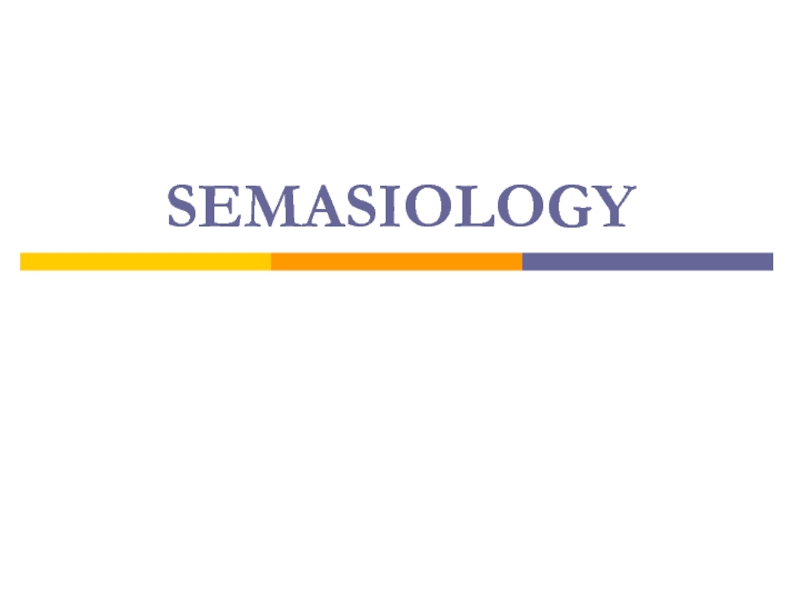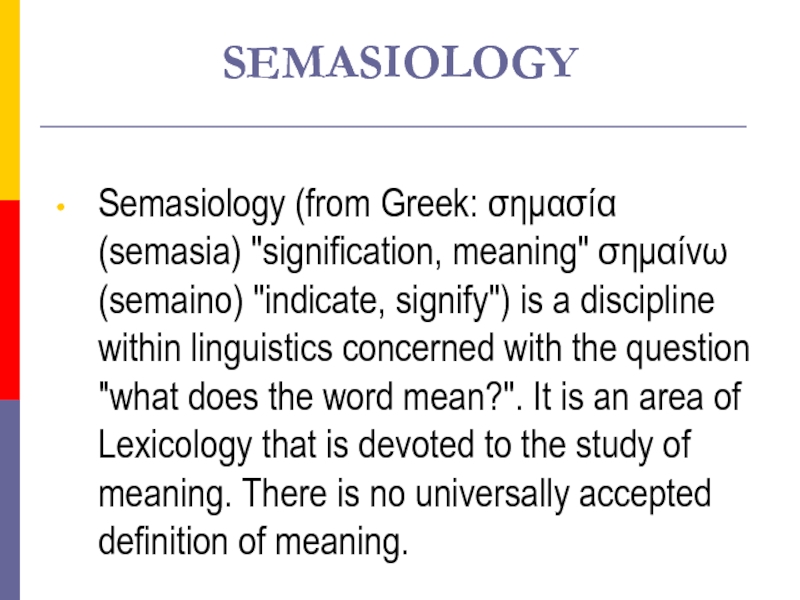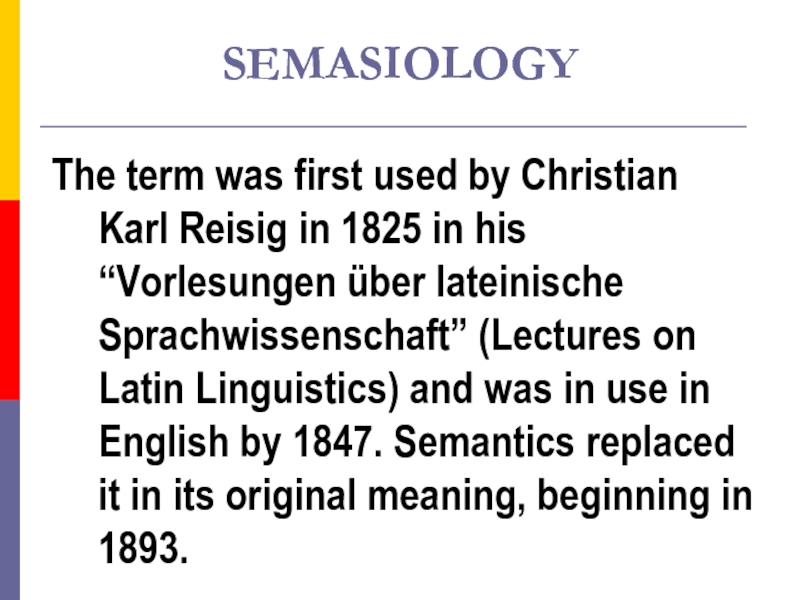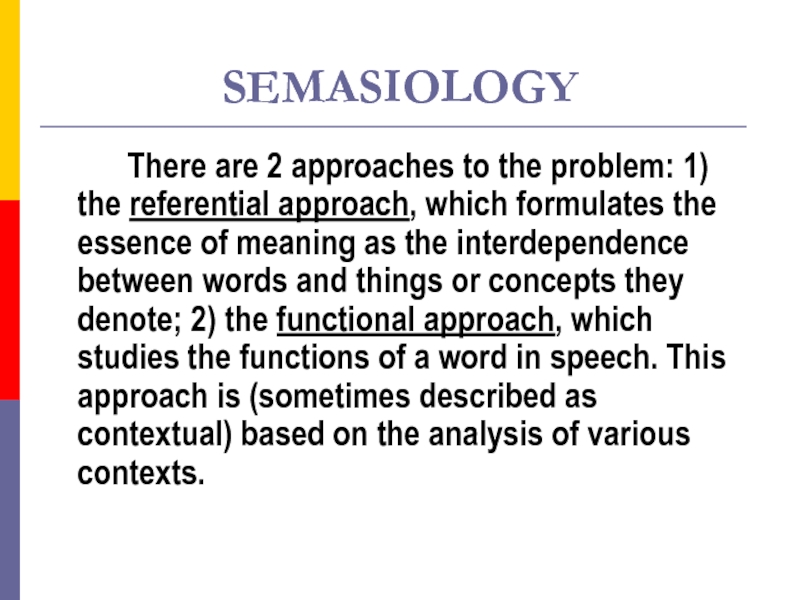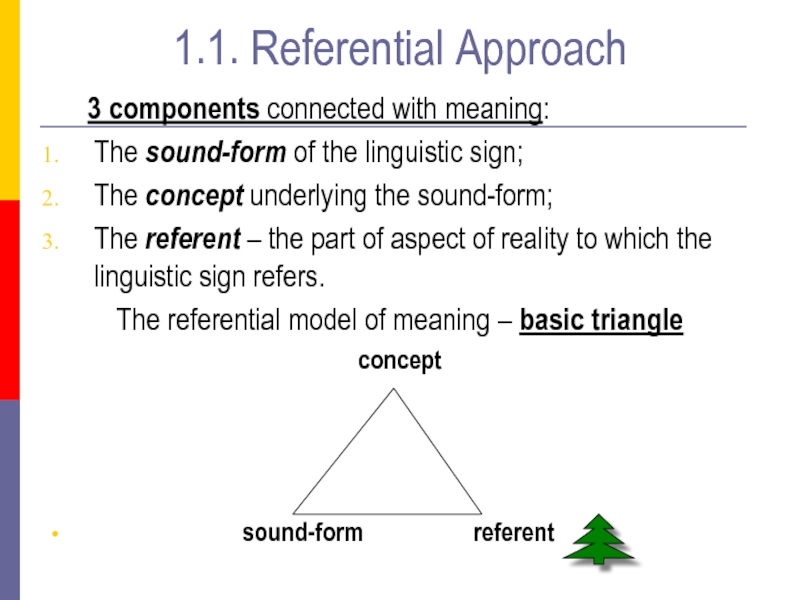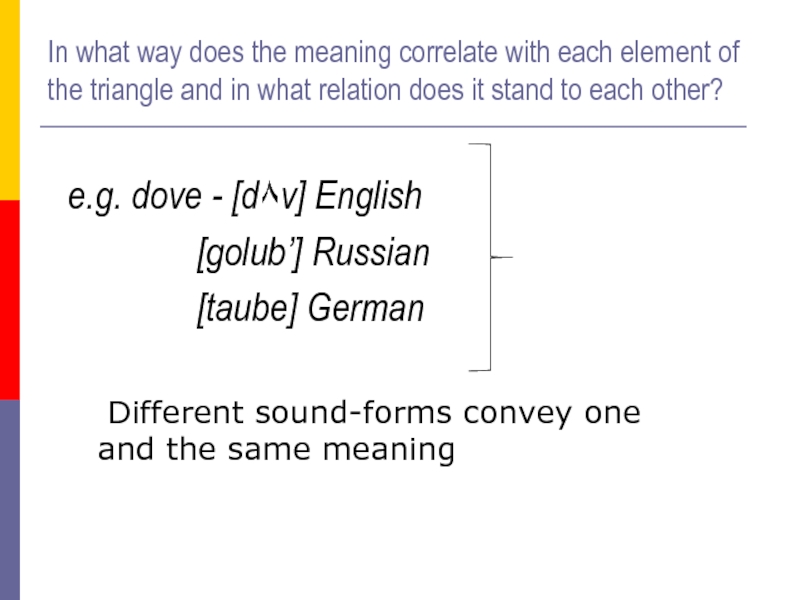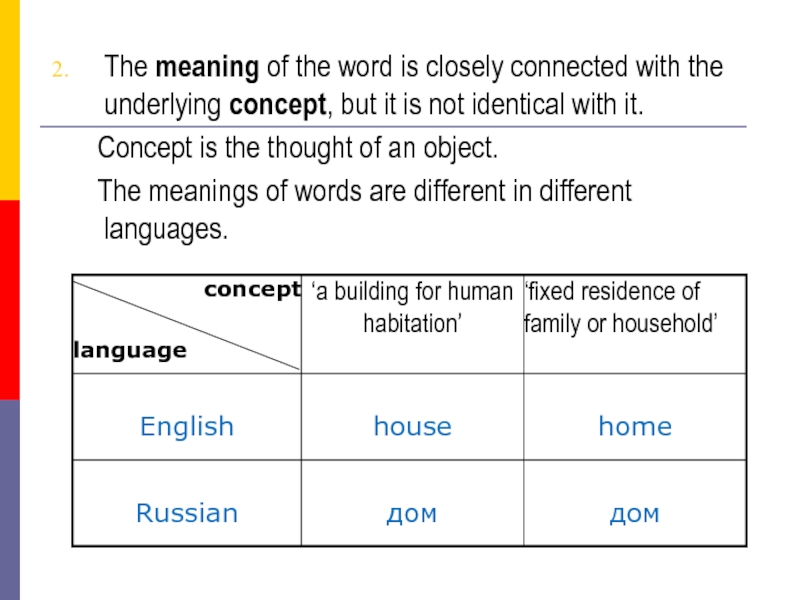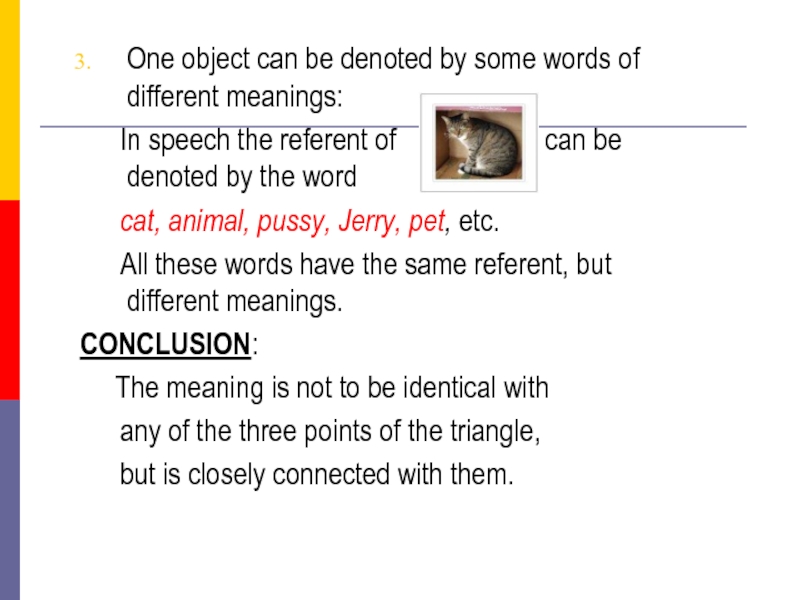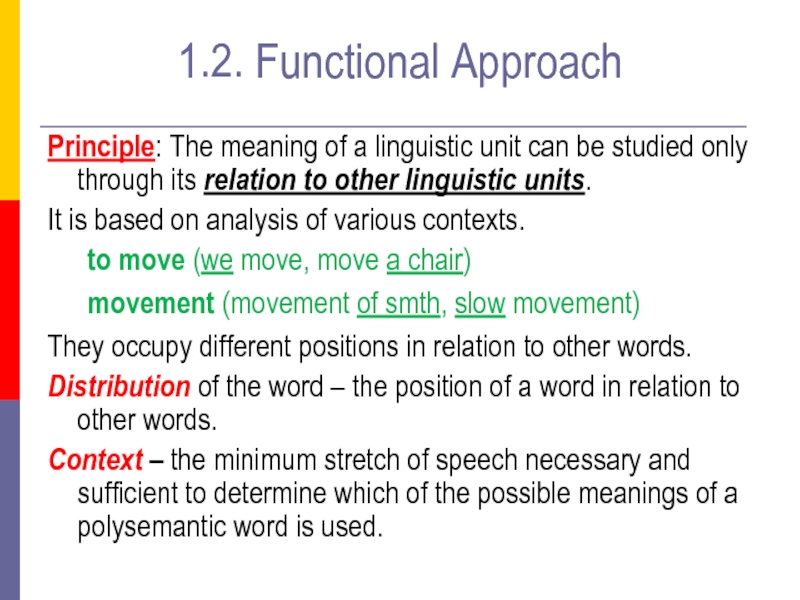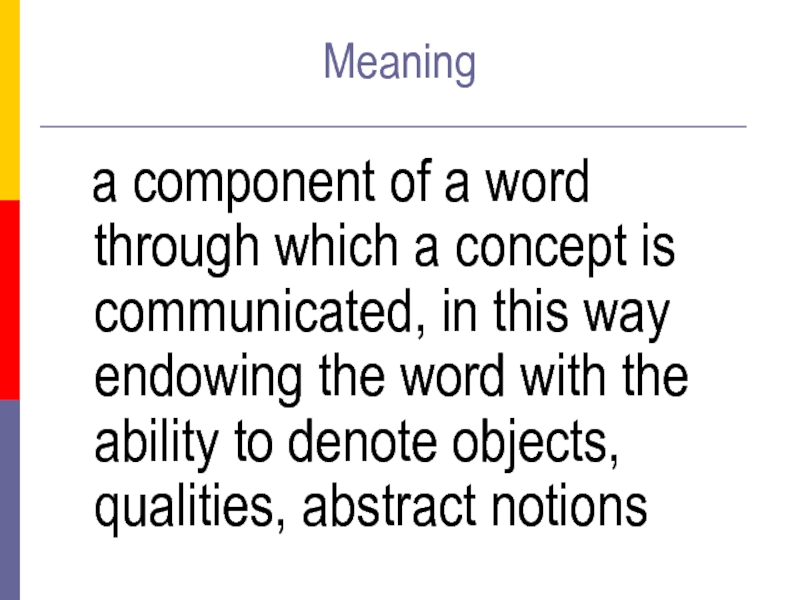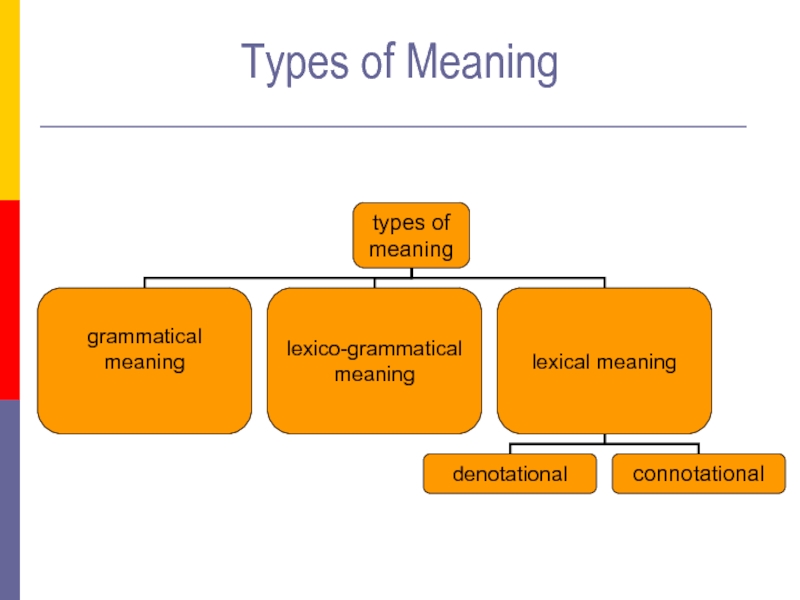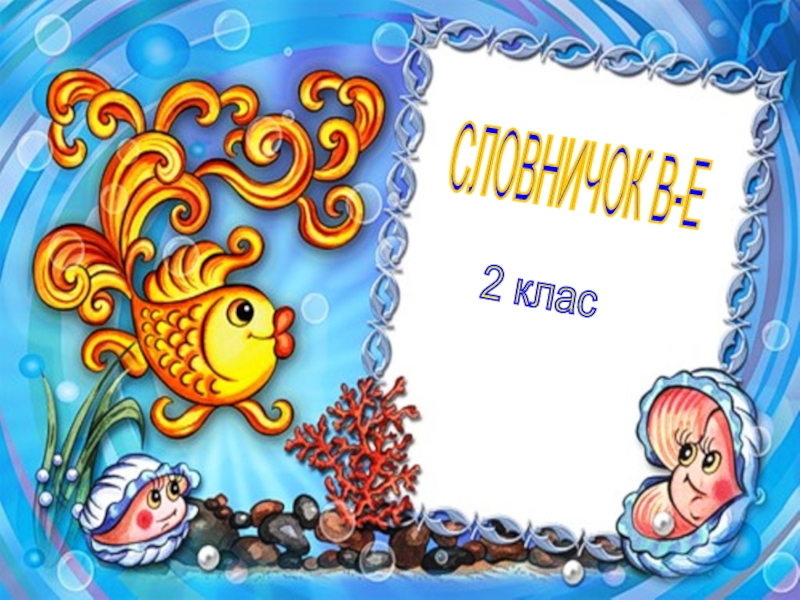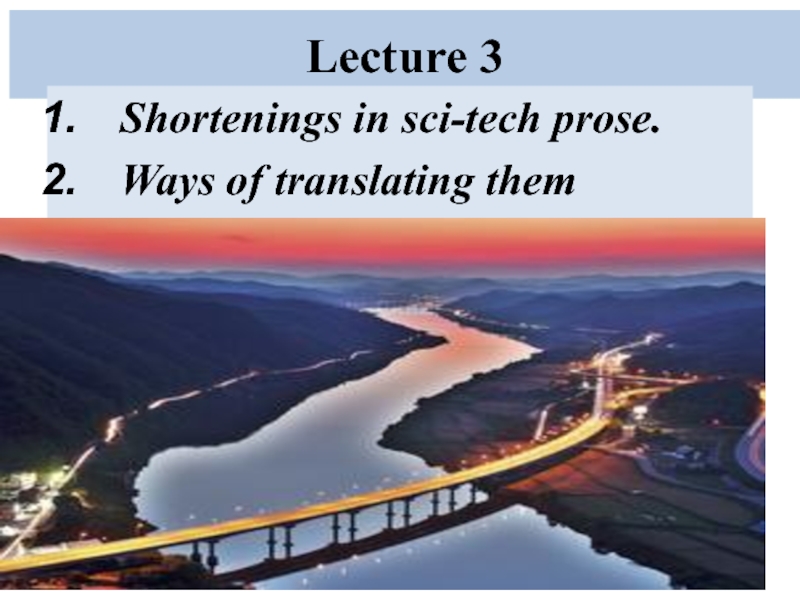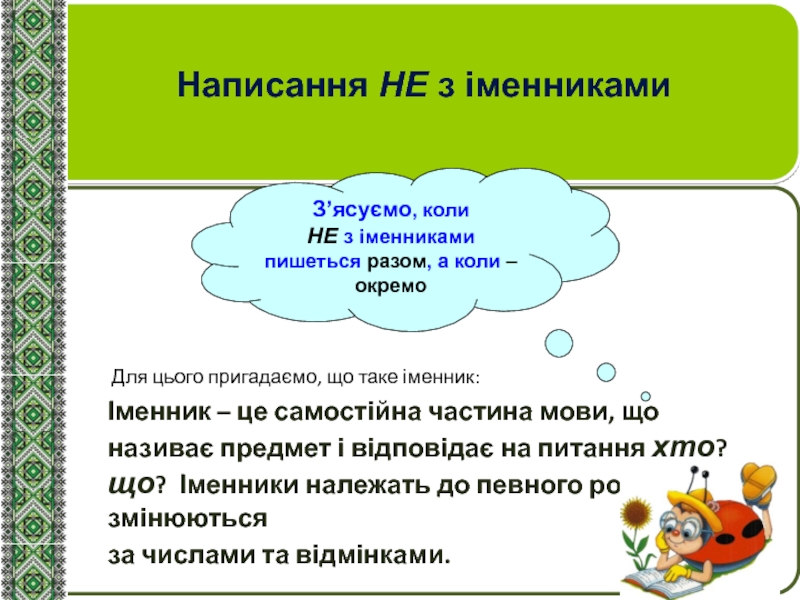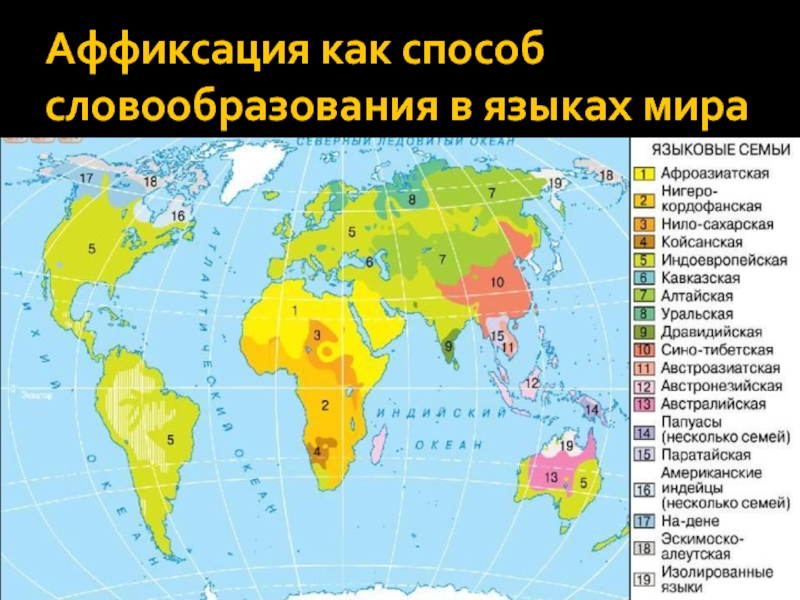- Главная
- Разное
- Дизайн
- Бизнес и предпринимательство
- Аналитика
- Образование
- Развлечения
- Красота и здоровье
- Финансы
- Государство
- Путешествия
- Спорт
- Недвижимость
- Армия
- Графика
- Культурология
- Еда и кулинария
- Лингвистика
- Английский язык
- Астрономия
- Алгебра
- Биология
- География
- Детские презентации
- Информатика
- История
- Литература
- Маркетинг
- Математика
- Медицина
- Менеджмент
- Музыка
- МХК
- Немецкий язык
- ОБЖ
- Обществознание
- Окружающий мир
- Педагогика
- Русский язык
- Технология
- Физика
- Философия
- Химия
- Шаблоны, картинки для презентаций
- Экология
- Экономика
- Юриспруденция
Semasiology (from Greek: σημασία (semasia) "signification, meaning" σημαίνω (semaino) "indicate, signify") презентация
Содержание
- 1. Semasiology (from Greek: σημασία (semasia) "signification, meaning" σημαίνω (semaino) "indicate, signify")
- 2. SEMASIOLOGY Semasiology (from Greek: σημασία (semasia)
- 3. SEMASIOLOGY The term was first used by
- 4. SEMASIOLOGY There are 2 approaches to the
- 5. 1.1. Referential Approach 3 components connected with
- 6. In what way does the meaning correlate
- 7. The meaning of the word is closely
- 8. One object can be denoted by some
- 9. 1.2. Functional Approach Principle: The meaning
- 10. Meaning a component of a word
- 11. Types of Meaning
Слайд 2SEMASIOLOGY
Semasiology (from Greek: σημασία (semasia) "signification, meaning" σημαίνω (semaino) "indicate, signify")
is a discipline within linguistics concerned with the question "what does the word mean?". It is an area of Lexicology that is devoted to the study of meaning. There is no universally accepted definition of meaning.
Слайд 3SEMASIOLOGY
The term was first used by Christian Karl Reisig in 1825
in his “Vorlesungen über lateinische Sprachwissenschaft” (Lectures on Latin Linguistics) and was in use in English by 1847. Semantics replaced it in its original meaning, beginning in 1893.
Слайд 4SEMASIOLOGY
There are 2 approaches to the problem: 1) the referential approach,
which formulates the essence of meaning as the interdependence between words and things or concepts they denote; 2) the functional approach, which studies the functions of a word in speech. This approach is (sometimes described as contextual) based on the analysis of various contexts.
Слайд 51.1. Referential Approach
3 components connected with meaning:
The sound-form of the linguistic
sign;
The concept underlying the sound-form;
The referent – the part of aspect of reality to which the linguistic sign refers.
The referential model of meaning – basic triangle
concept
sound-form referent
The concept underlying the sound-form;
The referent – the part of aspect of reality to which the linguistic sign refers.
The referential model of meaning – basic triangle
concept
sound-form referent
Слайд 6In what way does the meaning correlate with each element of
the triangle and in what relation does it stand to each other?
e.g. dove - [d۸v] English
[golub’] Russian
[taube] German
Different sound-forms convey one and the same meaning
Слайд 7The meaning of the word is closely connected with the underlying
concept, but it is not identical with it.
Concept is the thought of an object.
The meanings of words are different in different languages.
Concept is the thought of an object.
The meanings of words are different in different languages.
Слайд 8One object can be denoted by some words of different meanings:
In speech the referent of can be denoted by the word
cat, animal, pussy, Jerry, pet, etc.
All these words have the same referent, but different meanings.
CONCLUSION:
The meaning is not to be identical with
any of the three points of the triangle,
but is closely connected with them.
Слайд 91.2. Functional Approach
Principle: The meaning of a linguistic unit can
be studied only through its relation to other linguistic units.
It is based on analysis of various contexts.
to move (we move, move a chair)
movement (movement of smth, slow movement)
They occupy different positions in relation to other words.
Distribution of the word – the position of a word in relation to other words.
Context – the minimum stretch of speech necessary and sufficient to determine which of the possible meanings of a polysemantic word is used.
It is based on analysis of various contexts.
to move (we move, move a chair)
movement (movement of smth, slow movement)
They occupy different positions in relation to other words.
Distribution of the word – the position of a word in relation to other words.
Context – the minimum stretch of speech necessary and sufficient to determine which of the possible meanings of a polysemantic word is used.
Слайд 10Meaning
a component of a word through which a concept is
communicated, in this way endowing the word with the ability to denote objects, qualities, abstract notions
